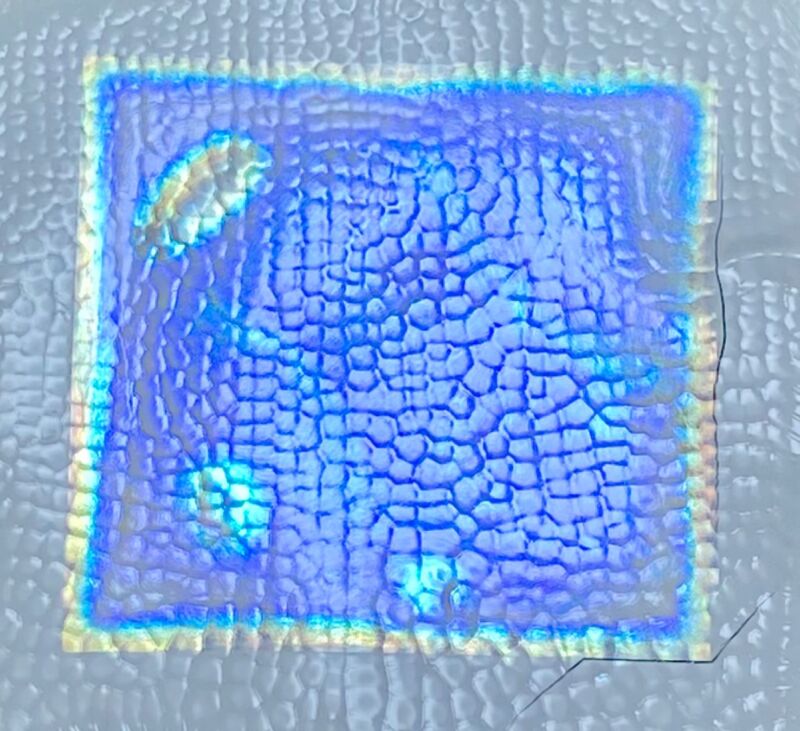Beating the heat: These plant-based iridescent films stay cool in the sun

Enlarge / A colorful, textured bi-layer film made from plant-based materials cools down when it's in the sun. (credit: Qingchen Shen)
Summer is almost here, bringing higher temperatures and prompting many of us to crank up the air conditioning on particularly hot days. The downside to A/C is that the units gobble up energy and can emit greenhouse gases, contributing further to global warming. Hence, there is strong interest in coming up with eco-friendly alternatives. Scientists from the University of Cambridge have developed an innovative new plant-based film that gets cooler when exposed to sunlight, making it ideal for cooling buildings or cars in the future without needing any external power source. They described their work at a recent meeting of the American Chemical Society.
The technical term for this approach is passive daytime radiative cooling (PDRC), so named because it doesn't require an injection of energy into the system to disperse heat. The surface emits its own heat into space without being absorbed by the air or atmosphere, thereby becoming several degrees cooler than the surrounding air without needing electrical energy.
"We know there is spontaneous thermal transfer between objects with different temperatures," Qingchen Shen said at a press conference during the meeting. Their cooling technology exploits that thermal transfer, with a twist. Most PDRC materials (paints, films, and so forth) are white, or have a mirrored finish, to achieve a broadband reflection of sunlight. Pigments or dyes interfere with that since they absorb specific wavelengths of light and only reflect certain colors, thereby transforming energy from the light into heat. The films created by Shen et al. are colored, but it is structural color in the form of nanocrystals, not due to adding pigments or dyes. So color can be added without sacrificing the passive cooling efficiency.